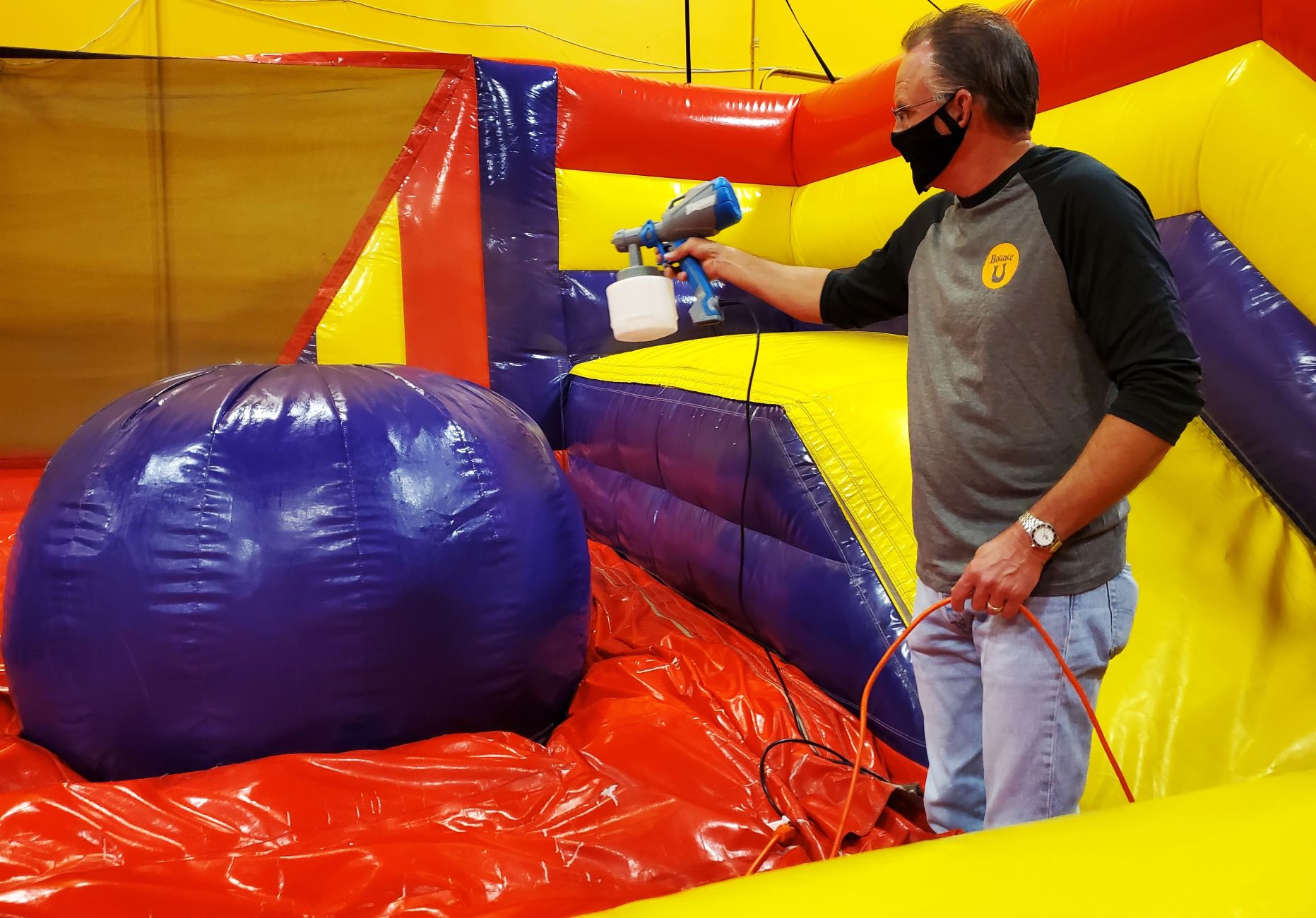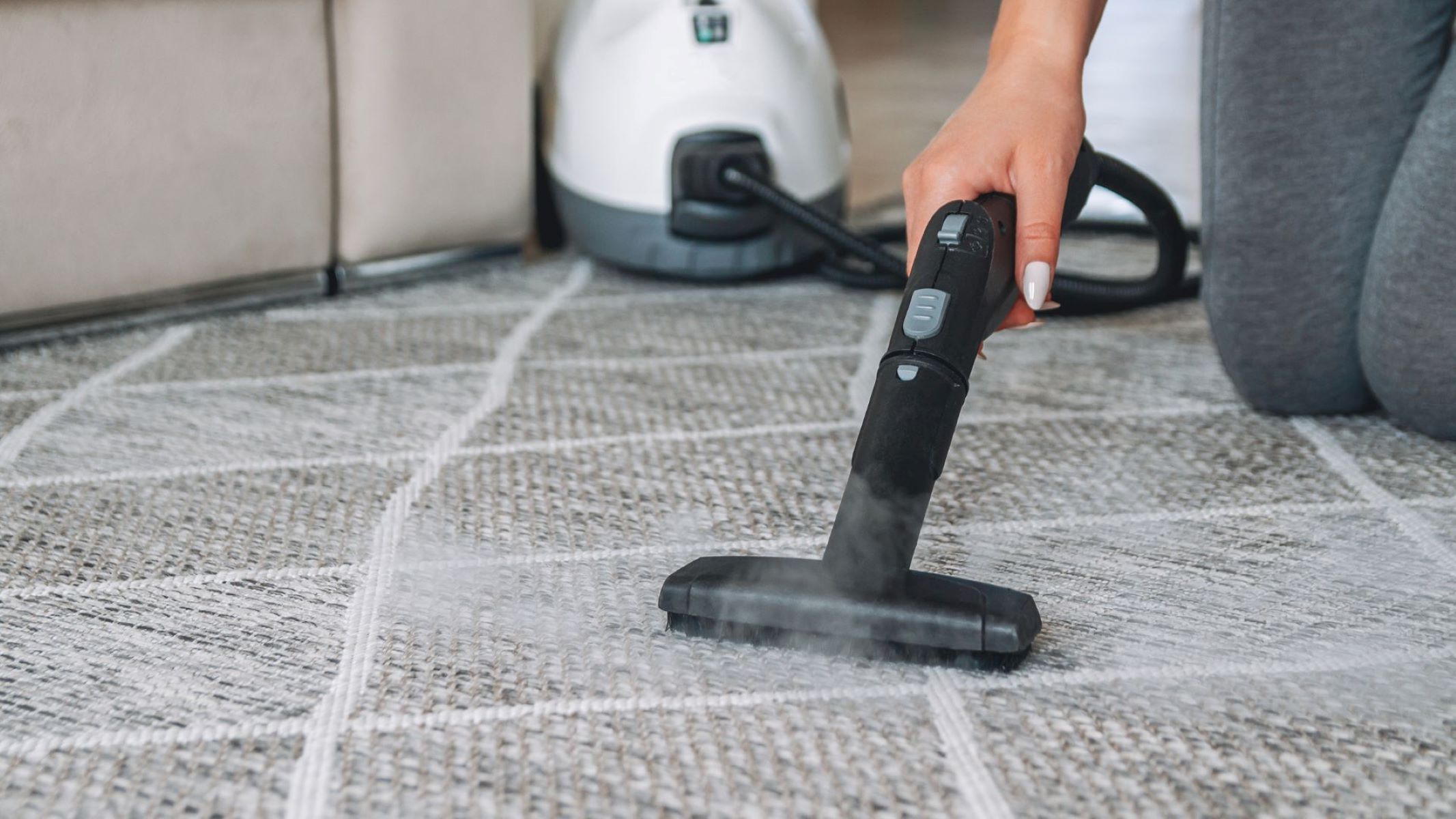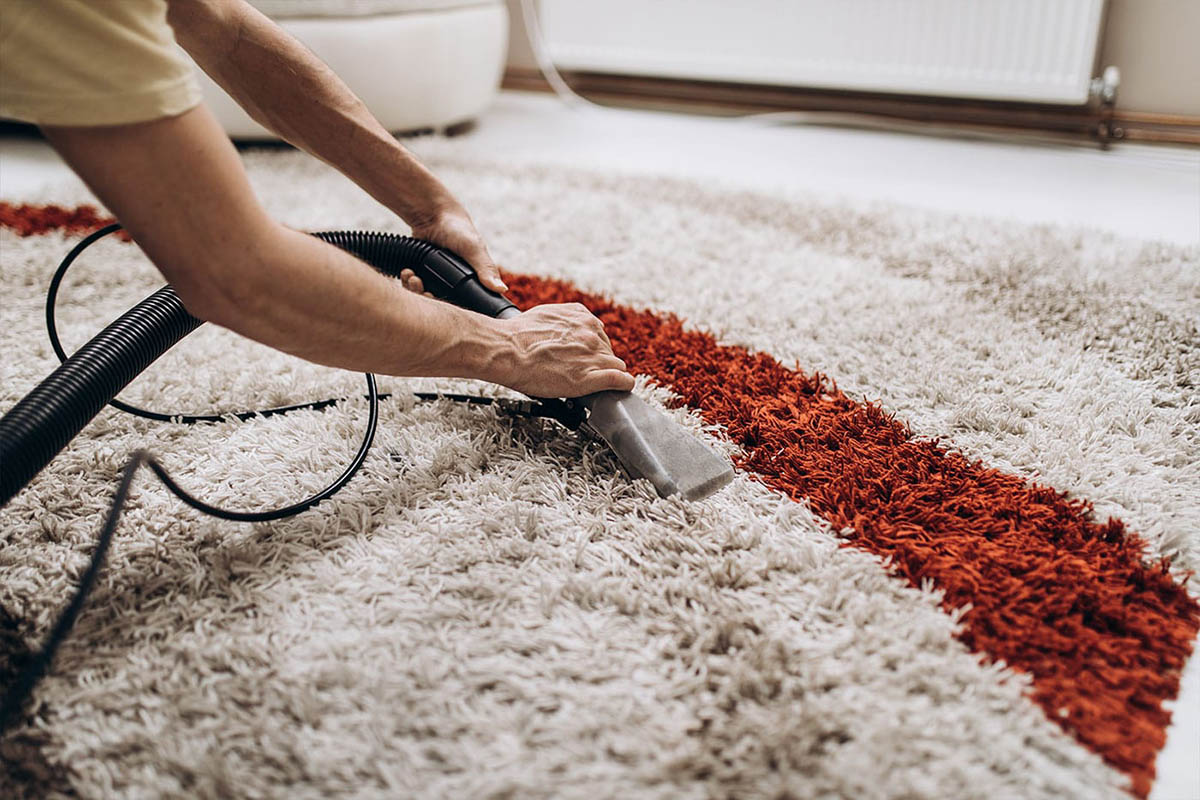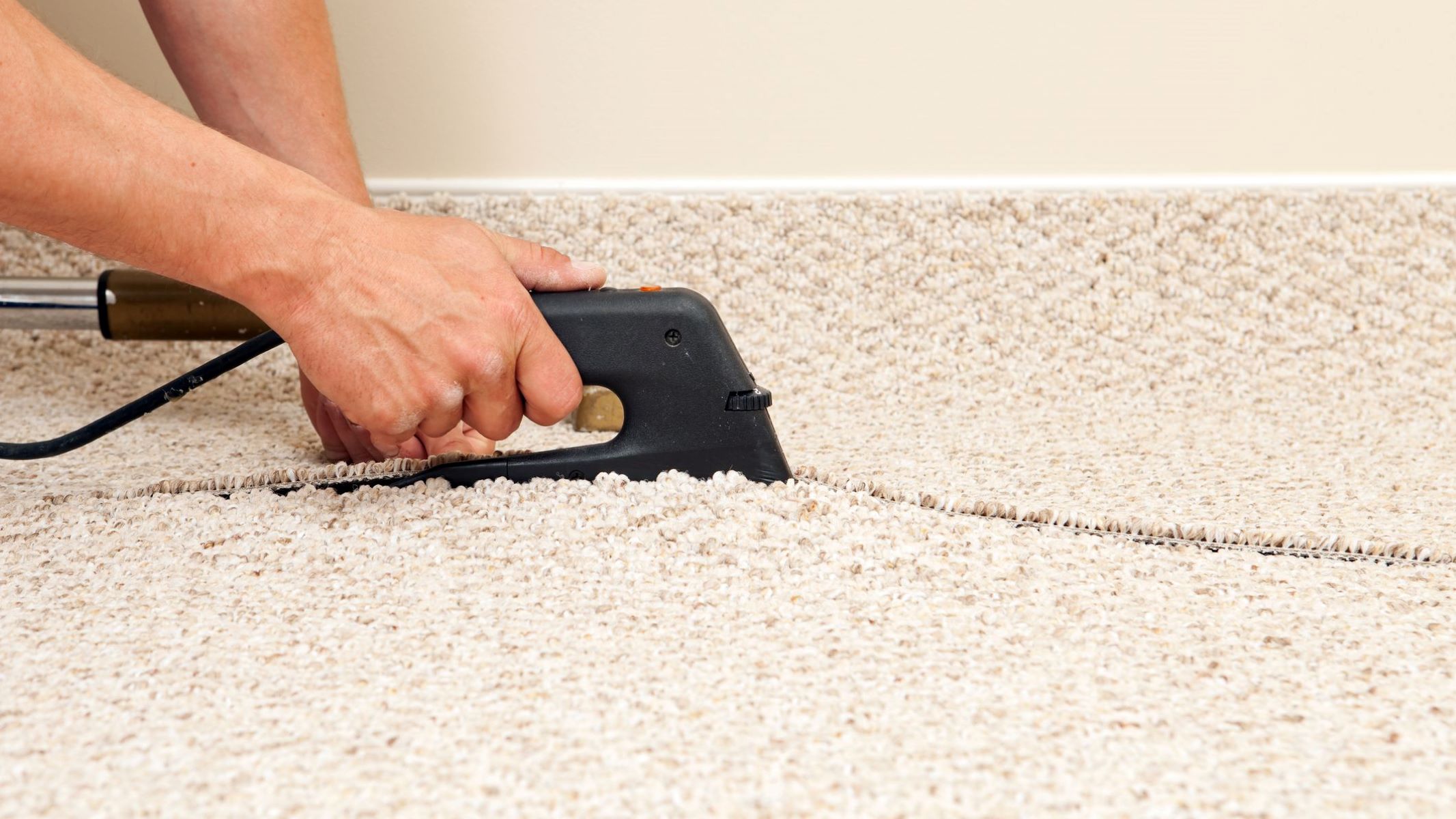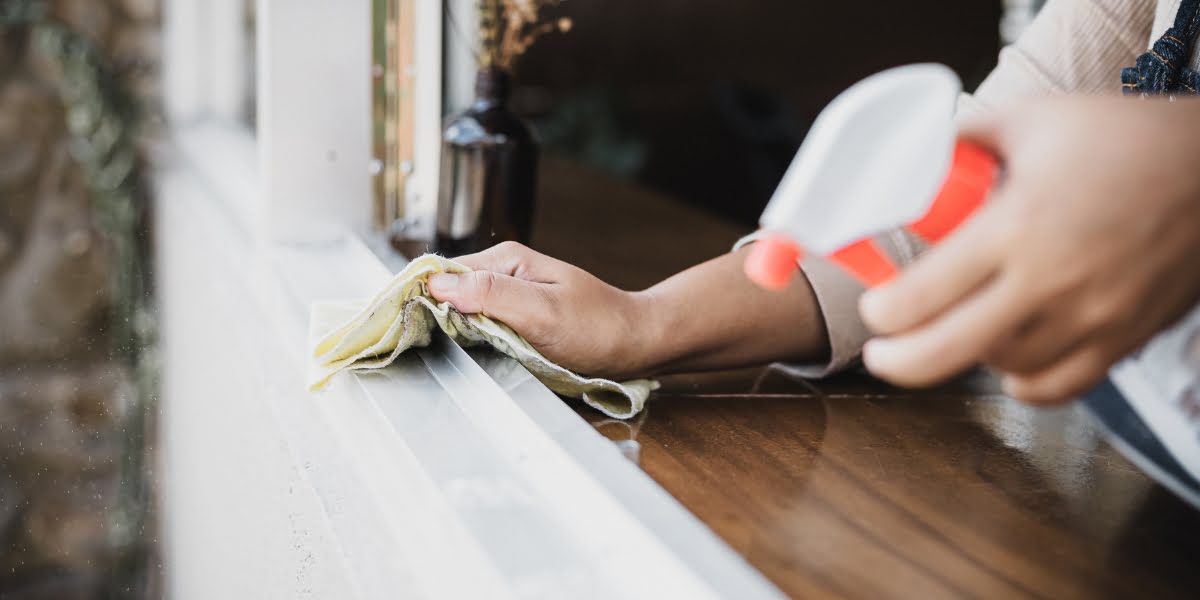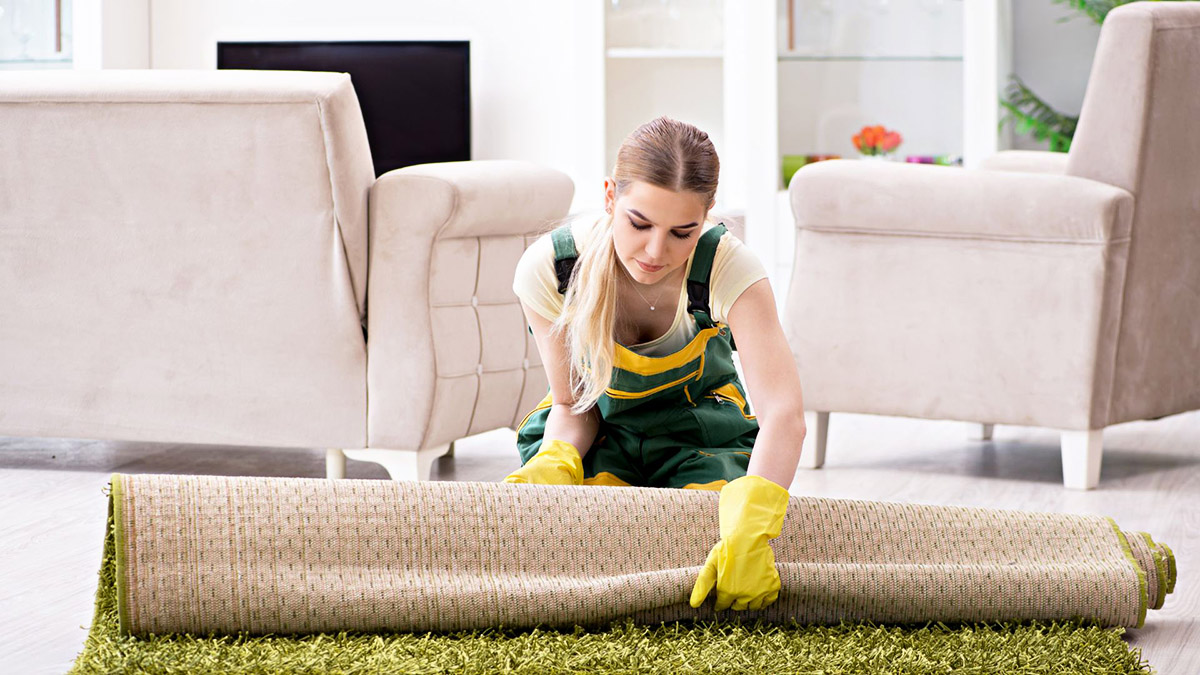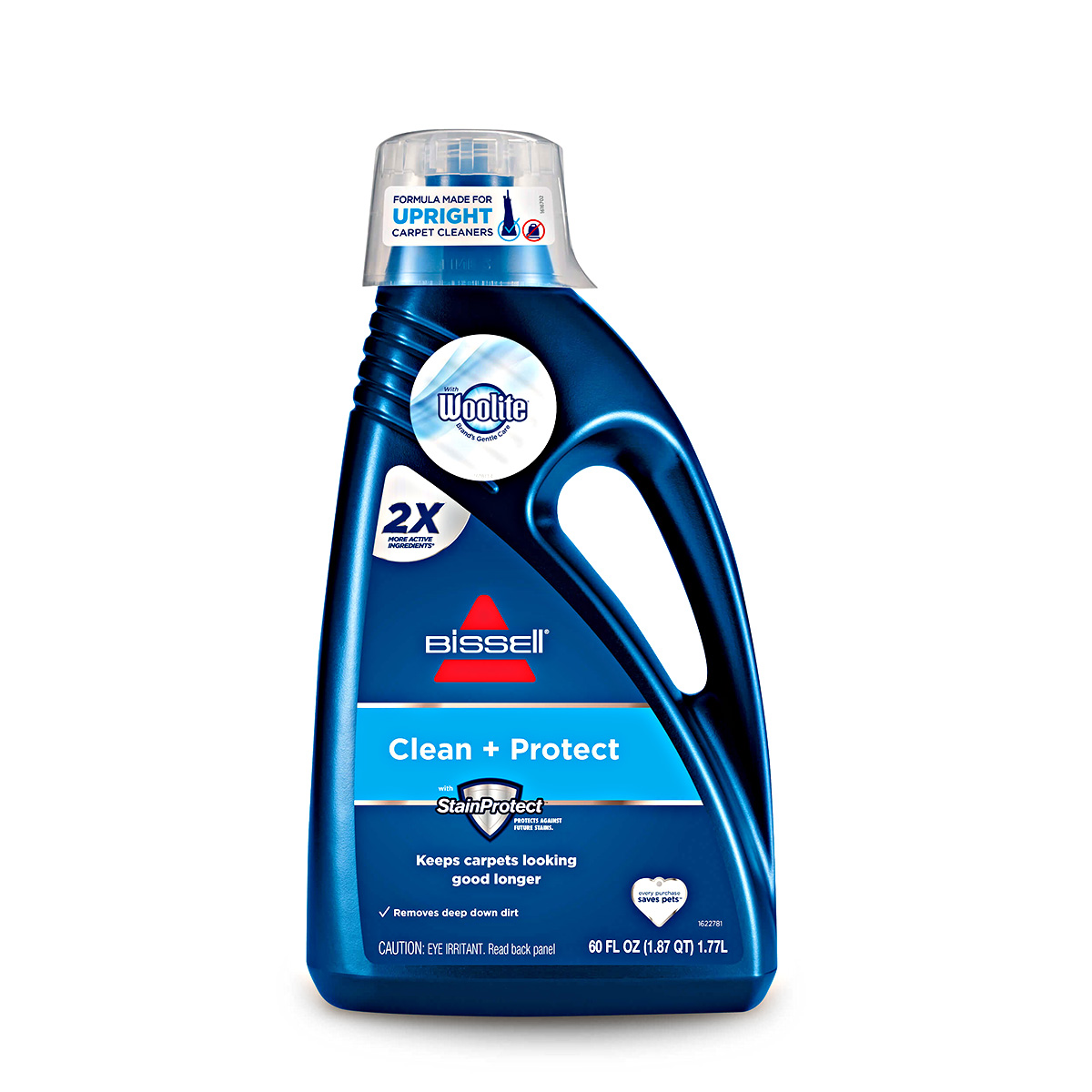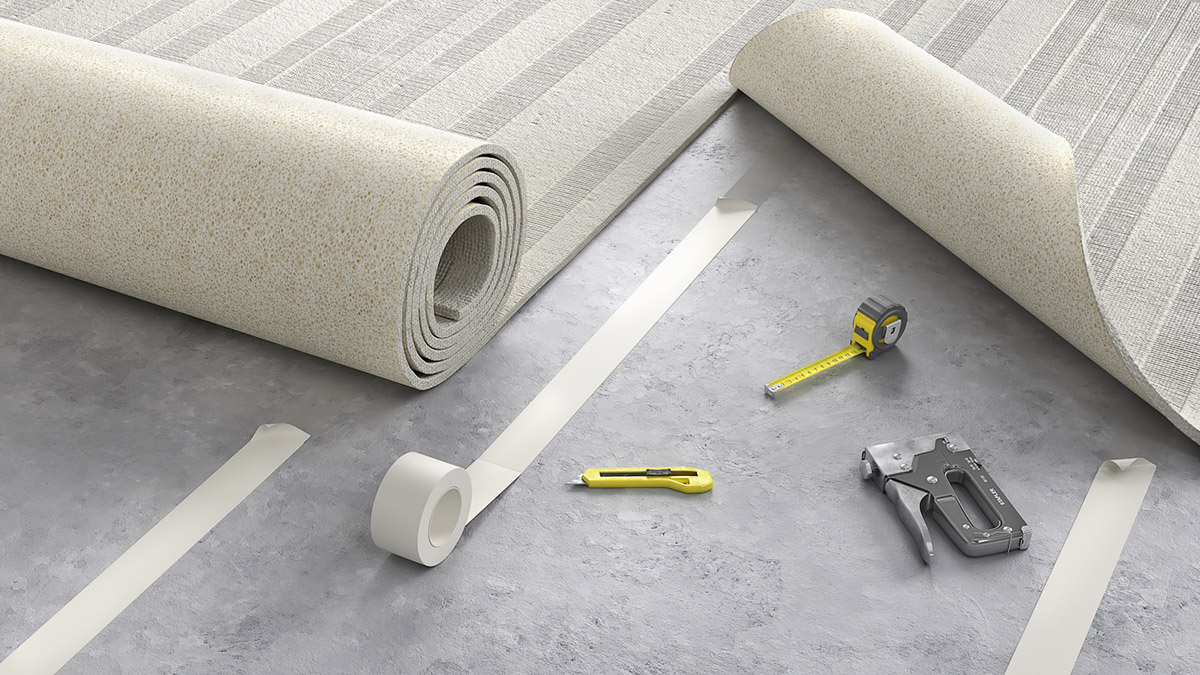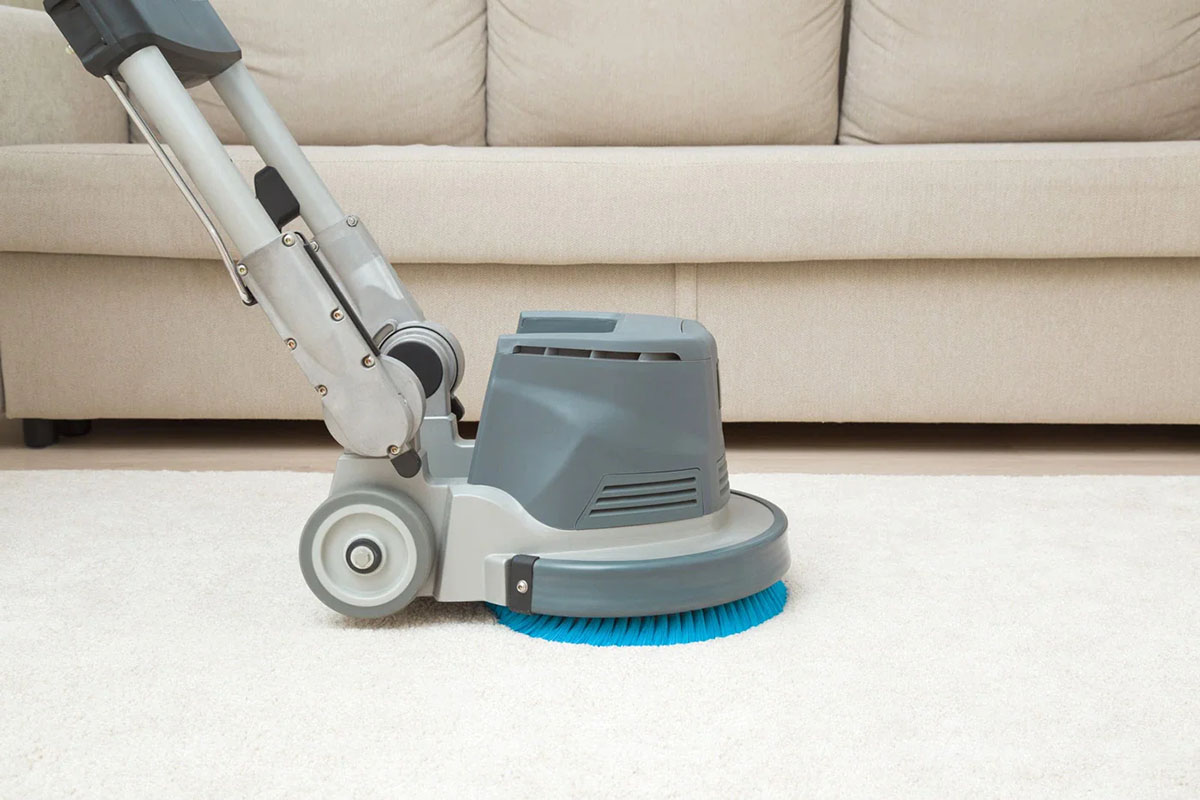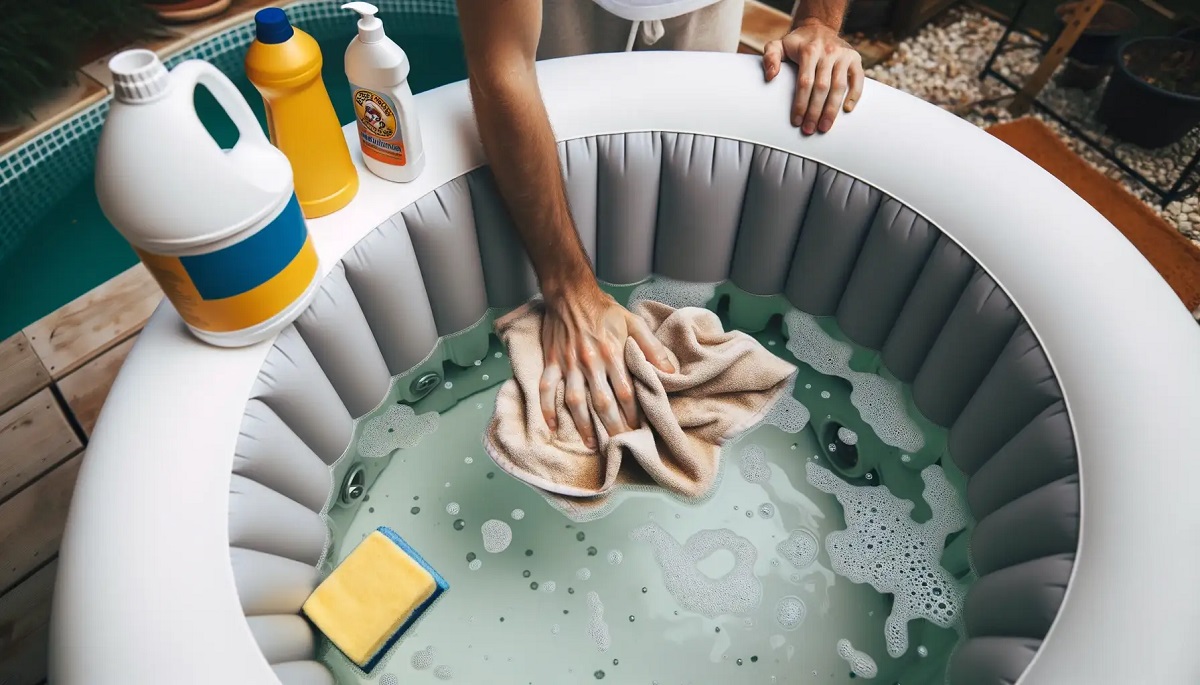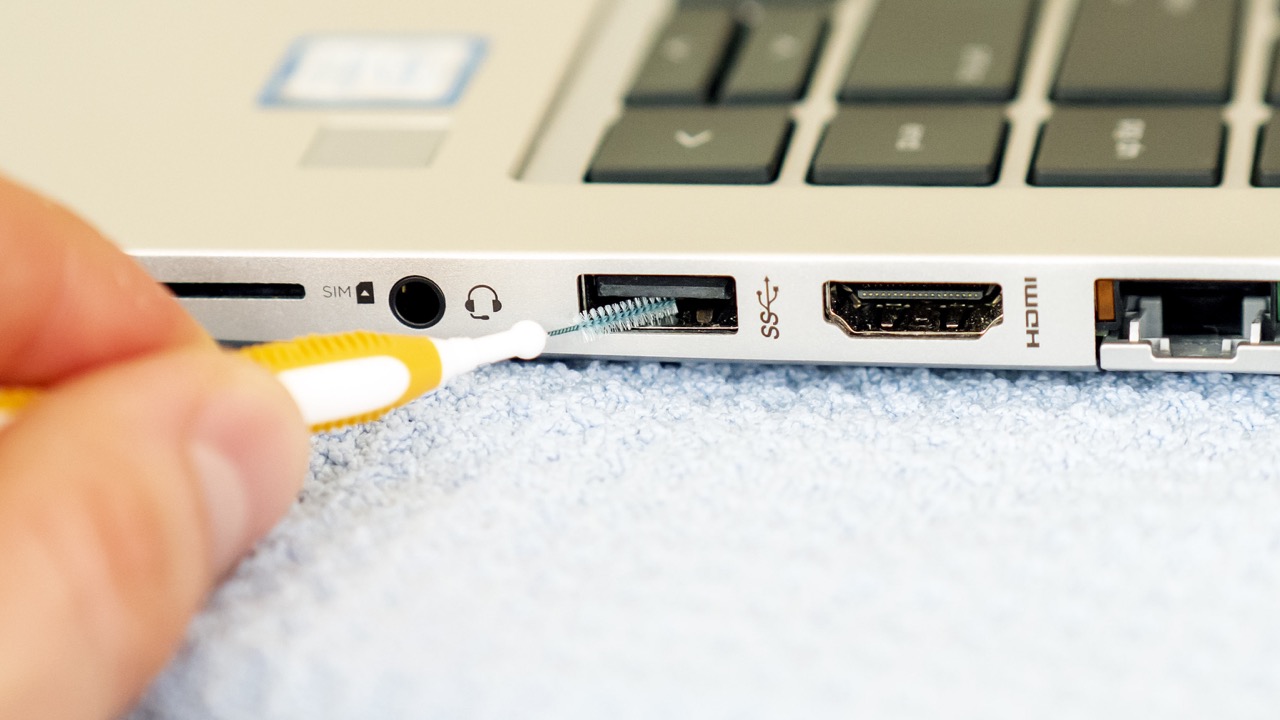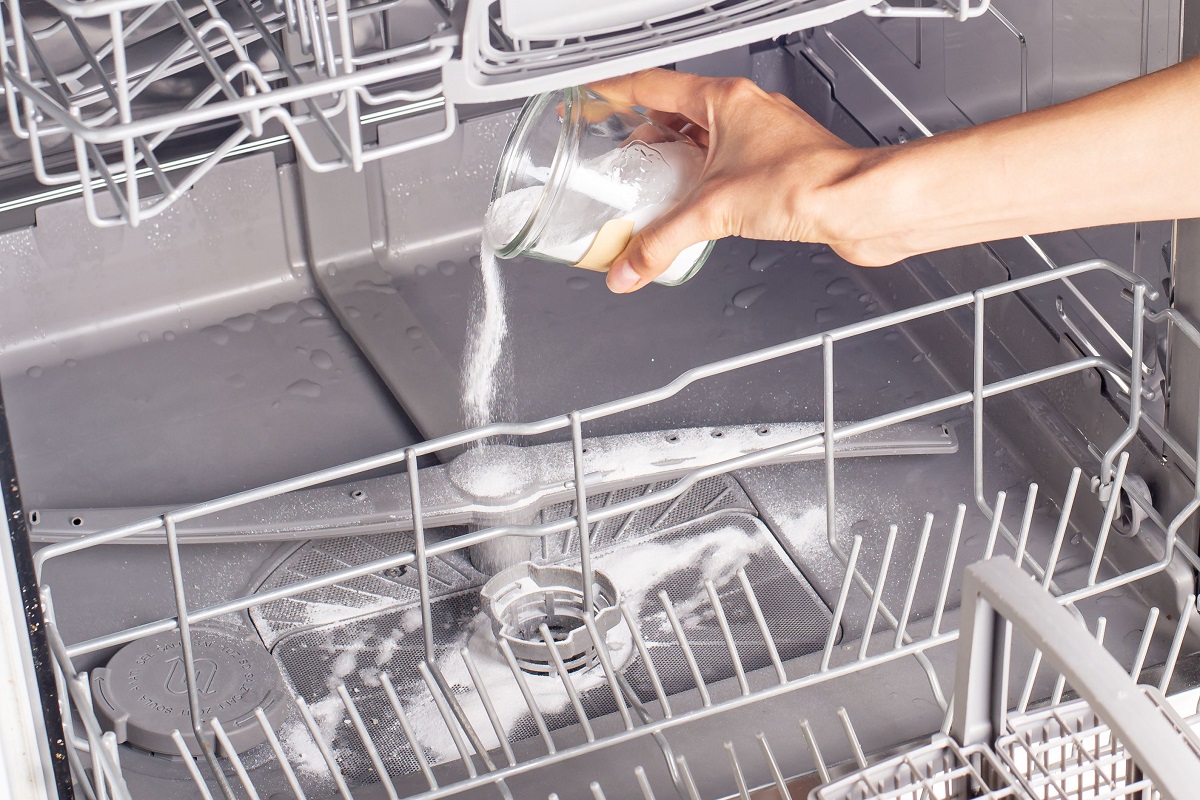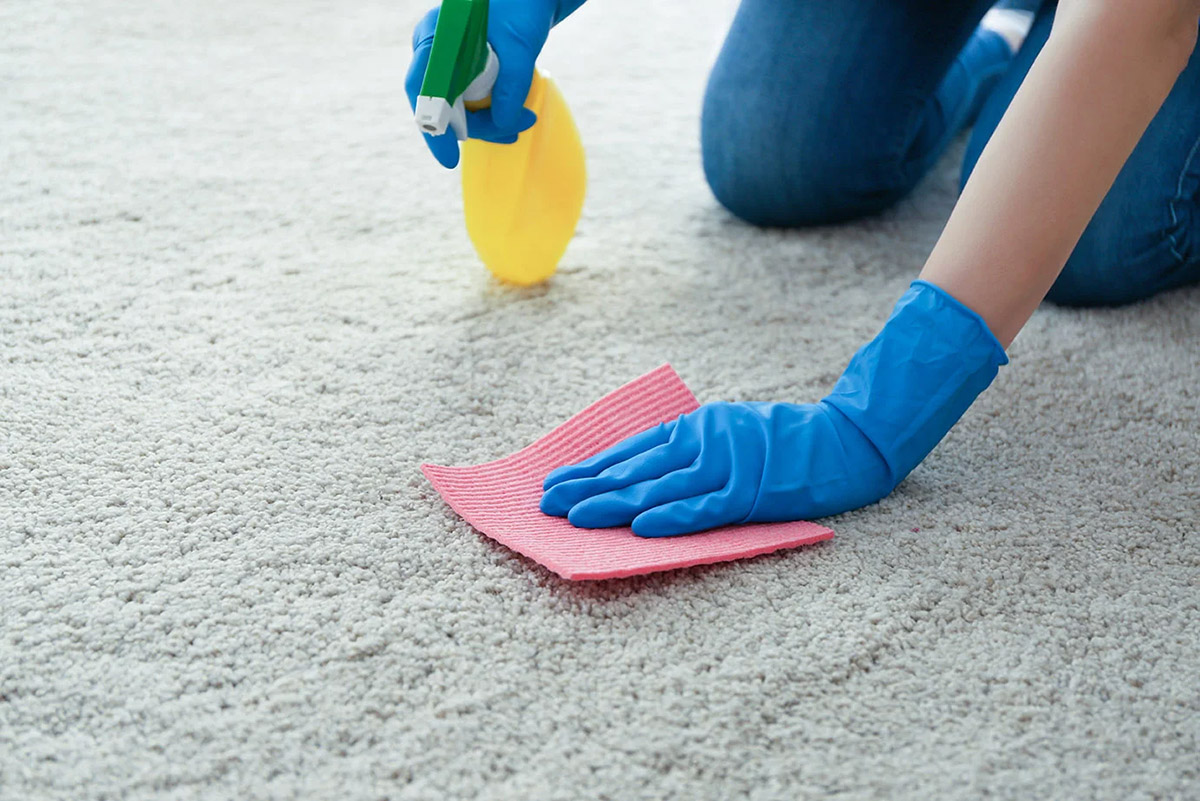

Articles
What Can Be Used To Clean A Carpet
Modified: February 25, 2024
Looking for articles on what can be used to clean a carpet? Discover effective carpet cleaning solutions and techniques in our informative articles.
(Many of the links in this article redirect to a specific reviewed product. Your purchase of these products through affiliate links helps to generate commission for Storables.com, at no extra cost. Learn more)
Introduction
Carpets play a crucial role in enhancing the aesthetic appeal and comfort of our homes. But with daily use, carpets can quickly accumulate dirt, stains, and unpleasant odors. Regular cleaning is essential to maintain the appearance and longevity of your carpets.
When it comes to carpet cleaning, there are various methods and cleaning agents available in the market. However, it’s important to choose the right cleaning solution that not only effectively removes dirt and stains but also keeps your carpets safe and free from damage. In this article, we will explore different products that can be used to clean carpets, providing you with a comprehensive guide to select the best cleaning method for your needs.
It’s worth noting that before attempting to clean your carpet, always check the manufacturer’s instructions for any specific cleaning recommendations. Additionally, perform a spot test in an inconspicuous area to ensure that the cleaning product does not cause any discoloration or damage to your carpet fibers.
Now, let’s delve into the various cleaning agents that can be used to keep your carpets fresh, clean, and looking their best.
Key Takeaways:
- Regular vacuuming with the right attachments is crucial for maintaining clean carpets and extending their lifespan, while specialized cleaning agents like carpet shampoos and natural remedies can effectively tackle tough stains and odors.
- When choosing cleaning products for your carpets, consider the type of carpet you have and perform spot tests to avoid damage. For stubborn stains or delicate carpets, professional carpet cleaning services offer specialized knowledge and equipment for effective and safe cleaning.
Read more: What Can I Use To Clean A Carpet
Vacuum Cleaner
A vacuum cleaner is an essential tool for regular carpet maintenance. It effectively removes loose dirt, dust, and debris from the surface and deep within the fibers of your carpet. Regular vacuuming not only helps to keep your carpets clean but also extends their lifespan by preventing the buildup of dirt particles that can wear down carpet fibers over time.
When using a vacuum cleaner, it’s important to choose the right attachments for your carpet type. Most vacuum cleaners come with a standard carpet brush attachment that is suitable for most carpets. However, if you have a high-pile or delicate carpet, consider using a brush attachment with softer bristles to avoid damaging the fibers.
To effectively vacuum your carpets, start by removing any large debris or objects from the surface. Then, move the vacuum cleaner in a back-and-forth motion over the carpet, making sure to cover all areas, including corners and edges. For high-traffic areas or heavily soiled spots, you may need to go over them multiple times for thorough cleaning.
It’s also important to empty the vacuum cleaner’s dust bin or replace the bag regularly to maintain optimal suction power. Additionally, check and clean the vacuum cleaner’s filters as recommended by the manufacturer to ensure efficient performance.
While a vacuum cleaner is great for regular maintenance, it may not be sufficient for removing stubborn stains or odors. In such cases, you may need to consider using specialized cleaning solutions or methods, which we will explore next.
Carpet Shampoo
Carpet shampoo is a popular cleaning agent specifically designed to deep clean carpets and remove tough stains and odors. It is available in both liquid and powder forms, and can be used with a carpet cleaning machine or applied manually using a sponge or brush.
When using a carpet shampoo, it’s important to follow the instructions provided by the manufacturer. Typically, you will need to dilute the shampoo with water and apply it to the carpet. Use a scrub brush or the brush attachment of a carpet cleaning machine to work the shampoo into the carpet fibers.
After treating the entire carpet, allow the shampoo to sit for the recommended amount of time to penetrate and break down dirt and stains. Then, using a carpet cleaning machine or a bucket of clean water and a sponge, rinse the carpet thoroughly to remove the shampoo and any residue.
Once the rinsing process is complete, ensure that the carpet is adequately dried. You can use a fan or open windows to promote airflow and aid in the drying process. Avoid walking on the carpet until it is completely dry to prevent new dirt from adhering to the damp fibers.
Carpet shampoos are often formulated with powerful cleaning agents and enzymes that target specific stains and odors. Some shampoos also contain protectants that help to repel dirt and stains, keeping your carpets cleaner for longer.
It’s important to note that certain types of carpet, such as wool or delicate synthetic fibers, may require specialized shampoos. Always check the label or consult with a professional to ensure that the shampoo is suitable for your carpet type.
Regular deep cleaning with carpet shampoo can help maintain the cleanliness and freshness of your carpets. However, for smaller stains or localized dirt, there are other household items that can be used effectively, which we will explore in the following sections.
Baking Soda
Baking soda, also known as sodium bicarbonate, is a versatile and affordable household item that can be used for various cleaning purposes, including cleaning carpets. Its natural properties make it an effective deodorizer and mild abrasive, making it useful for removing odors and light stains from carpets.
To use baking soda for carpet cleaning, start by removing any loose dirt or debris from the surface of the carpet. Sprinkle a generous amount of baking soda over the affected area, making sure to cover the entire stain or odor source.
Allow the baking soda to sit on the carpet for at least 15-20 minutes. This will give it time to absorb odors and lift stains from the fibers. For stubborn stains or lingering odors, you can leave the baking soda on the carpet overnight.
After the allotted time has passed, use a vacuum cleaner with a brush attachment to thoroughly vacuum the baking soda from the carpet. This will help to remove the absorbed dirt, debris, and any remaining baking soda. Be sure to go over the area multiple times to ensure all the baking soda is removed.
Baking soda can also be used in combination with other cleaning agents for more stubborn stains or odors. For example, you can create a paste by mixing baking soda with a small amount of water or vinegar. Apply the paste to the stained area and let it sit for a few hours before vacuuming it up.
It’s important to note that while baking soda is generally safe for most carpets, it’s always a good idea to perform a spot test in an inconspicuous area before treating the entire carpet. This will ensure that there are no adverse reactions or discoloration.
Overall, baking soda is a cost-effective and eco-friendly option for freshening up your carpets and tackling light stains. However, for more stubborn or deep-seated stains, you may need to explore other cleaning agents and methods, which we will discuss in the following sections.
Vinegar
Vinegar is a natural and versatile cleaning agent that can be used to tackle a wide range of cleaning tasks, including carpet cleaning. Its acidic properties make it effective in removing stains, killing bacteria, and neutralizing odors.
To use vinegar for carpet cleaning, start by preparing a solution of equal parts white vinegar and water in a spray bottle. Shake the bottle to mix the solution well.
Before applying the vinegar solution to the carpet, it’s important to remove any loose dirt or debris. You can do this by vacuuming the carpet or using a brush to loosen and lift the particles.
Spray the vinegar solution onto the stained or odorous areas of the carpet. Allow it to sit for a few minutes to penetrate the fibers and break down the dirt and stains.
Next, use a clean cloth or sponge to blot the treated areas, applying gentle pressure to absorb the vinegar solution along with the loosened dirt and stains. Repeat this process until the cloth or sponge comes back clean.
After blotting, rinse the carpet by spraying clean water onto the treated areas and blotting again to remove any remaining vinegar residue. It’s important to remove all the vinegar from the carpet, as any leftover residue can attract dirt and cause re-soiling.
Once the carpet has been rinsed, place a clean towel or absorbent cloth over the damp areas and press down firmly to remove excess moisture. You can also use a fan or open windows to speed up the drying process.
Vinegar can be used for general carpet cleaning, but it’s important to note that it may not be suitable for all types of carpets. It’s always a good idea to perform a spot test on a small, inconspicuous area of the carpet to ensure compatibility and avoid any potential damage or discoloration.
Overall, vinegar is a cost-effective and eco-friendly option for carpet cleaning. However, for more stubborn stains or heavily soiled carpets, you may need to consider other cleaning methods or products, which we will explore in the following sections.
Read more: How To Use A Vinegar To Clean A Carpet
Hydrogen Peroxide
Hydrogen peroxide is a powerful cleaning agent that can be used to effectively remove stains and disinfect carpets. It acts as a bleaching agent, making it particularly useful for removing stubborn stains like coffee, wine, or pet urine.
Before using hydrogen peroxide on your carpet, it’s important to spot test it in an inconspicuous area to ensure that it won’t cause any discoloration or damage. Once you have confirmed its compatibility, you can proceed with the following steps:
First, blot the stained area with a clean cloth or paper towel to remove any excess liquid or debris. Then, pour a small amount of hydrogen peroxide directly onto the stain.
Gently blot the stain with a clean cloth, applying slight pressure to help the hydrogen peroxide penetrate the carpet fibers. Continue blotting until the stain begins to lift. Avoid rubbing the stain, as this could spread it further into the carpet.
After the stain has been lifted, rinse the area with clean water to remove any remaining hydrogen peroxide. Blot again with a clean cloth to absorb the moisture.
It’s important to note that hydrogen peroxide has bleaching properties, so it’s recommended to use it on lighter-colored carpets. For darker carpets, dilute the hydrogen peroxide with water before applying to minimize the risk of discoloration.
Hydrogen peroxide is also effective in removing odors from carpets. Mix equal parts hydrogen peroxide and water in a spray bottle and lightly mist the carpet. Allow it to sit for a few minutes, then blot the area with a clean cloth to absorb any excess liquid.
While hydrogen peroxide can be a powerful cleaning agent, it should be used with caution. Avoid using it on delicate or wool carpets, as it may cause damage. Always follow the instructions and guidance provided by the manufacturer to ensure safe and effective use.
If the stain persists or if you have concerns about using hydrogen peroxide on your carpet, it’s advisable to seek professional carpet cleaning services for more advanced stain removal techniques.
To clean a carpet, mix 1/4 cup of white vinegar, 1 tbsp of dish soap, and 1 cup of warm water. Blot the stain with the solution and a clean cloth, then rinse with water and blot dry.
Rubbing Alcohol
Rubbing alcohol, also known as isopropyl alcohol, is a versatile cleaning agent that can be used on carpets to remove stains, disinfect, and eliminate odors. It is particularly effective in tackling oily or greasy stains.
Before using rubbing alcohol on your carpet, it’s important to spot test it in an inconspicuous area to ensure that it won’t cause any discoloration or damage. Once you have confirmed its compatibility, you can proceed with the following steps:
Start by blotting the stained area with a clean cloth or paper towel to remove any excess liquid or debris. Then, pour a small amount of rubbing alcohol onto a clean cloth or sponge.
Gently dab the stained area with the cloth or sponge, applying slight pressure to help lift the stain. Be careful not to rub vigorously, as this could cause the stain to spread or damage the carpet fibers.
Continue blotting the stain, changing to a clean portion of the cloth or sponge as needed, until the stain begins to fade. You may need to repeat this process for more stubborn or larger stains.
Once the stain has been lifted, rinse the area with clean water to remove any residual rubbing alcohol. Blot the area with a clean cloth to absorb excess moisture.
In addition to stain removal, rubbing alcohol can also be used to disinfect carpets and eliminate odors. Mix equal parts rubbing alcohol and water in a spray bottle and lightly mist the carpet. Allow it to air dry, and the alcohol will help eliminate bacteria and neutralize odors.
While rubbing alcohol is generally safe to use on most types of carpets, it’s always best to perform a spot test beforehand. Additionally, avoid using rubbing alcohol on delicate or wool carpets, as it may cause damage.
If the stain persists or if you have concerns about using rubbing alcohol on your carpet, it’s advisable to seek professional carpet cleaning services for more advanced stain removal techniques.
Dish Soap
Dish soap, commonly found in every household, can be a handy cleaning agent for tackling carpet stains. Its grease-fighting properties make it effective in removing a variety of stains, including food spills, grease marks, and general dirt and grime.
To use dish soap for carpet cleaning, start by blotting the stained area with a clean cloth or paper towel to remove any excess liquid or debris. Then, mix a few drops of dish soap with warm water in a spray bottle or a bucket.
Apply the soapy solution directly to the stained area and gently work it into the carpet fibers using a clean cloth or sponge. Be careful not to scrub too vigorously, as this can damage the carpet.
Continue to blot and lightly scrub the stain until it starts to lift from the carpet. For tougher stains, you may need to repeat the process or allow the soapy solution to sit on the stain for a few minutes before scrubbing.
Once the stain has been lifted, rinse the area with clean water to remove any remaining soap residue. Blot the area with a clean cloth to absorb excess moisture.
It’s important to note that when using dish soap on carpets, it’s best to use a mild or gentle formula without any added dyes or fragrances. Avoid using dish soap that contains bleach, as it can cause discoloration on certain types of carpets.
While dish soap can be effective for light to moderate stains, it may not be suitable for heavily soiled or deep-set stains. In such cases, it’s recommended to seek professional carpet cleaning services for more advanced stain removal techniques.
Remember, always perform a spot test in an inconspicuous area before treating the entire carpet and follow the manufacturer’s instructions for safe and effective use of dish soap.
Club Soda
Club soda is a fizzy beverage that can be surprisingly effective in removing carpet stains. The carbonation in club soda helps to lift stains from carpet fibers, making it a popular choice for tackling spills, such as coffee, wine, or pet urine.
To use club soda for carpet cleaning, start by blotting the stained area with a clean cloth or paper towel to remove any excess liquid. Then, pour a small amount of club soda directly onto the stain.
Gently blot the stain with a clean cloth, applying slight pressure to help the club soda penetrate the carpet fibers. Blot from the outside of the stain inward to avoid spreading the stain further.
Continue blotting the stain with the club soda until you start to see the stain lifting. If the stain is particularly stubborn, you can lightly scrub the area with a soft brush or sponge.
Once the stain has faded, rinse the area with clean water to remove any remaining club soda residue. Blot the area with a clean cloth to absorb excess moisture.
Club soda can also be effective in neutralizing odors, especially those caused by pet accidents. If your carpet has lingering odors, pour some club soda over the affected area and let it sit for a few minutes before blotting it up.
While club soda is generally safe to use on most types of carpets, it’s always a good idea to perform a spot test in an inconspicuous area first. Additionally, remember that club soda is most effective when used immediately after a spill occurs. Fresh stains are generally easier to remove than older ones that have set into the carpet fibers.
If the stain persists or if you have concerns about using club soda on your carpet, it’s advisable to seek professional carpet cleaning services for more advanced stain removal techniques.
Overall, club soda can be a convenient and cost-effective option for treating carpet stains, provided that it is used correctly and promptly.
Read more: What Can You Use To Clean A Washing Machine
Cornstarch
Cornstarch is a common kitchen ingredient that can be surprisingly effective in removing grease and oil stains from carpets. Its absorbent properties make it useful for lifting and absorbing the oils, making it easier to clean the affected area.
To use cornstarch for carpet stain removal, start by blotting the stained area with a clean cloth or paper towel to remove any excess liquid or debris. Then, sprinkle a generous amount of cornstarch directly onto the stain.
Gently press down on the cornstarch with a clean cloth or sponge to help it penetrate the carpet fibers. Allow the cornstarch to sit on the stain for at least 15-20 minutes, or even overnight if the stain is particularly stubborn or set-in.
After the cornstarch has had time to absorb the oils, use a vacuum cleaner with a brush attachment to effectively remove the cornstarch from the carpet. Go over the area multiple times to ensure all the cornstarch is removed.
If any residue remains, you can lightly dampen a clean cloth with water and blot the area to remove the remaining cornstarch. Be careful not to saturate the carpet, as excessive moisture can lead to mold or mildew growth.
Cornstarch is particularly effective for grease or oil stains, but it may not be as effective for other types of stains. In such cases, you may need to consider alternative cleaning methods or products suited to the specific stain.
It’s worth noting that cornstarch may leave a white residue on darker-colored carpets. Before treating the entire stained area with cornstarch, it’s advisable to perform a spot test in an inconspicuous area to ensure that it won’t cause any discoloration or damage.
If the stain persists, or if you have concerns about using cornstarch on your carpet, it’s recommended to seek professional carpet cleaning services for more advanced stain removal techniques.
Overall, cornstarch can be a handy and affordable option for tackling grease and oil stains on carpets, provided it is used correctly and in conjunction with appropriate cleaning techniques.
Conclusion
When it comes to keeping your carpets clean and fresh, there are various products that can be used to effectively remove stains, odors, and dirt. From vacuum cleaners to specialized cleaning agents, each option offers unique benefits and methods of use.
A vacuum cleaner is an essential tool for regular carpet maintenance, helping to remove loose dirt and debris from the surface and within the carpet fibers. Regular vacuuming not only keeps your carpets clean but also extends their lifespan.
For deep cleaning and stain removal, carpet shampoos are a popular choice. These specially formulated cleaning agents are designed to penetrate the fibers and break down tough stains and odors, leaving your carpets looking and smelling refreshed.
If you prefer using natural remedies, substances like baking soda, vinegar, hydrogen peroxide, rubbing alcohol, club soda, and even cornstarch can be effective in treating specific stains and odors. These household items have their unique cleaning properties that can help tackle common carpet issues.
It’s important to remember that while these products can be effective, it’s always crucial to consider the type of carpet you have and perform spot tests to avoid any potential damage or discoloration.
If you encounter stubborn stains that are difficult to remove or have concerns about cleaning more delicate carpets, it’s advisable to seek professional carpet cleaning services. They have specialized knowledge and equipment to handle a wide range of stains and ensure your carpets are cleaned effectively and safely.
In conclusion, regular cleaning and maintenance are essential to keep your carpets looking their best and prolong their lifespan. Whether you rely on a vacuum cleaner, commercial carpet shampoos, or natural cleaning agents, choosing the right method and products for your specific needs will help keep your carpets fresh, clean, and inviting for years to come.
Frequently Asked Questions about What Can Be Used To Clean A Carpet
Was this page helpful?
At Storables.com, we guarantee accurate and reliable information. Our content, validated by Expert Board Contributors, is crafted following stringent Editorial Policies. We're committed to providing you with well-researched, expert-backed insights for all your informational needs.
